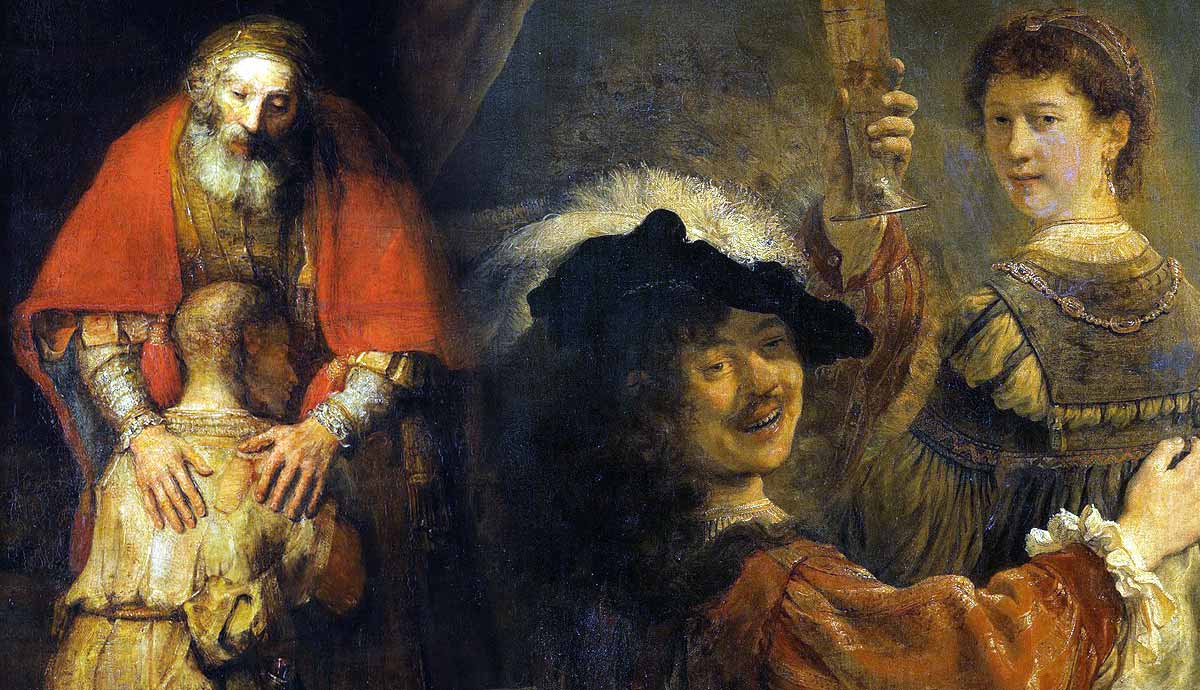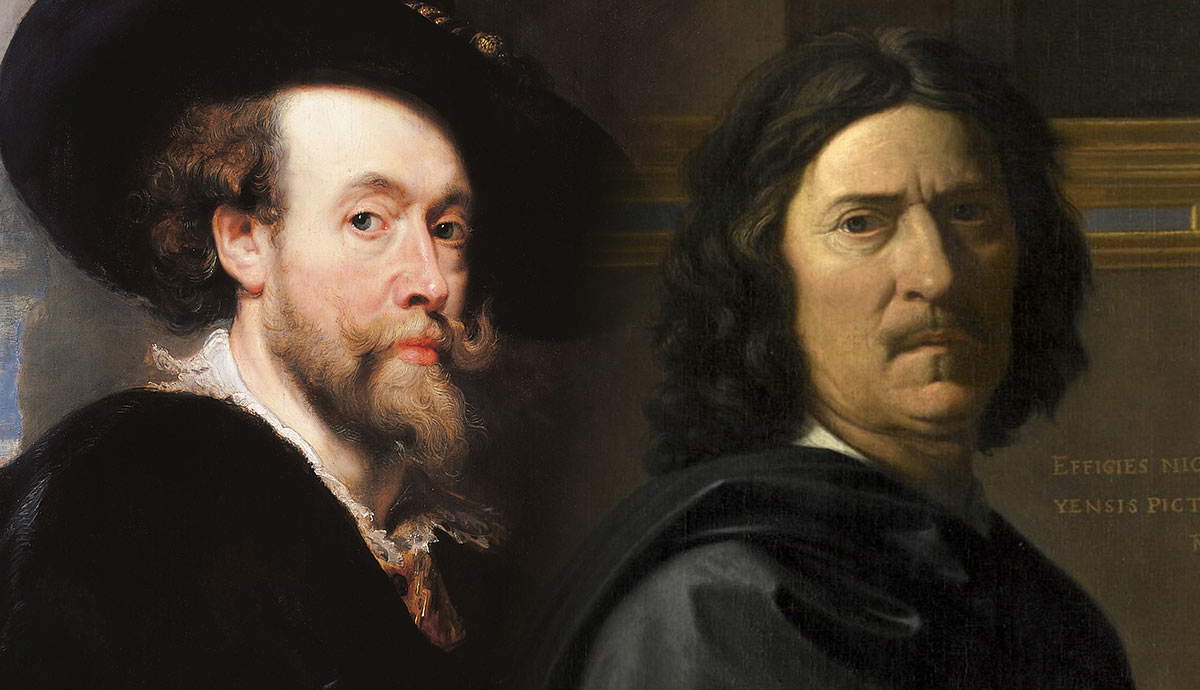
Many art collectors say that collecting is a passion and has to come from love rather than monetary gain. Nonetheless, some, like Charles Saatchi, not only accumulate their works, but also take measures to develop the artists’ careers to make the works even more valuable. Others, like the infamous Medici family, used art to boost their social and political reputations. Read on to learn more about 10 influential art collectors and the works they cherished.
1. The Medici: The Renaissance Art Collectors

The House of Medici was a political and banking dynasty that ruled Florence and several other Italian territories for several centuries. Ruthless and corrupt, the Medici were known for their complex conspiracies and intrigues that allowed them to hold on to power for so long. The Medici family is historically renowned for its close association with prominent artists of their era. They were well-known patrons and collectors who used art as a political tool that helped them establish their reputation as god-fearing leaders with a unique sense of beauty. Artists like Donatello, Fra Angelico, Michelangelo, and Leonardo da Vinci created works on the request of the family members.
2. Gertrude Stein (1874–1946) and Leo Stein (1872–1947)

Gertrude and Leo Stein were neither politicians nor heirs to factories, yet nonetheless they were able to afford art. Coming from an upper-middle-class Jewish family from Pennsylvania, both siblings moved to Europe at the beginning of the 20th century. Gertrude, a poet known for experimental, unconventional poetry, and Leo, an art critic, were well-known in the art world and had the connections necessary to follow the latest trends on the avant-garde scene.
After Leo moved to Italy, the siblings had to divide their collection. In a detailed letter, Leo asked his sister to send him a still life with apples by Paul Cezanne and a collection of Renoirs, leaving behind all of the Picassos and a vast array of other works. Gertrude Stein was known for her interest in Cubism, which was expressed through her collection of works by Pablo Picasso and Juan Gris.
3. Isabella Stewart Gardner (1840–1924)

New York City-born Isabella Stewart Gardner, an heiress of a linen merchant and the wife of a Boston merchant, remains known as a woman with a refined taste for both fashion and art. Isabella and her husband travelled extensively, and first began collecting artworks that reminded them of their travels. In her fifties, she narrowed her focus on European art, acquiring remarkable pieces by Rembrandt and Vermeer. In 1990, some of Gardner’s most prized artifacts were stolen from the Boston museum and still remain missing.
Gardner was particularly close to John Singer Sargent, who painted several of her portraits, including one made two years before her death. At the time, Gardner had already suffered several strokes and could barely move. To keep her dignity, Sargent painted her in a flowy white dress and headcover, making her look like a precious doll wrapped in white tissue paper rather than a fragile suffering body.
4. Albert C. Barnes (1872–1951)

Another American, Albert C. Barnes, was born into a poor working-class family with a father who was a disabled Civil War veteran. Despite his harsh living conditions, Barnes took the time and effort to study, so he became a well-trained doctor and chemist. Barnes made his fortune by developing and producing an antiseptic called Argyrol, used to treat eye infections and gonorrhea.
After becoming rich, Albert C. Barnes developed a love for art, fueled by his childhood friend, the painter William Glackens. Under Glackens’ guidance, Barnes studied modern French and African art. Among his vast collection, there were more than 900 paintings, including several works by Henri Matisse he bought from Gertrude and Leo Stein.
5. Solomon R. Guggenheim (1861–1949)

Solomon R. Guggenheim was born into a wealthy Jewish family that made fortunes through the mining business. As a collector, he started with the Old Master painting, inspired by his wife Irene Rothschild, but in the 1920s developed an interest in abstraction. After Adolf Hitler came to power and denounced almost all modern art as the product of “Jewish degeneracy,” Guggenheim began collecting it out of spite and desire to support the artists.
Solomon Guggenheim’s collection would be impossible without the woman who was unfairly dismissed by his heirs and forgotten for decades. Abstract painter and curator Hilla von Rebay introduced Guggenheim to the world of abstract painting and was the main intellectual and social power behind the growing collection. Unfortunately, other members of the Guggenheim family disliked her so much that, after the patriarch’s death, she was expelled from the museum board.
6. Peggy Guggenheim (1898–1979)

One of the most famous and eccentric figures in art history, Peggy Guggenheim was personally responsible for promoting some of the most influential artists of her generation. She was a niece of Solomon R. Guggenheim, who lost her father in the sinking. Among her family members, she was known as an eccentric and a rebel, refusing to conform to the standards of respectability. She befriended, dated, and married artists, traveled to Europe, and in 1938 opened her own gallery. She was one of the first promoters of the famous Abstract Expressionist Jackson Pollock (although her first studio visit almost ended in a disaster, as Pollock was too drunk to stand straight).
Today, the collection of Peggy Guggenheim is housed in the unfinished Palazzo Venier dei Leoni on Venice’s Grand Canal. Before Guggenheim, the unfinished mansion belonged to another eccentric collector, Italian socialite Marchesa Luisa Casati, who also collected works of modern art, although she preferred to focus on her own portraits.
7. Sergei Shchukin (1854–1936)

Although his name is only vaguely familiar to the majority of the Western public, Sergei Schukin, born in the Russian Empire, was one of the first art collectors to recognize the innovation of modern artists like Pablo Picasso and Henri Matisse. Shchukin came from a rich family of textile merchants with an interest in art collecting. Unlike most of his wealthy Russian contemporaries, who collected unsystematic curiosities, Sergei Shchukin focused on the cutting-edge avant-garde painting from France. He deliberately sought out the works that shocked and surprised, taking his time to learn their secrets and to understand the artists’ visual language. Apart from bringing Fauvism and Cubism to Russia, Shchulin was the first Eastern European collector to turn his gaze towards African art. In the early years of the 20th century, he brought several sculptures from Mali and Angola.
Unlike most private collectors, who chose to hide their possessions in the privacy of their homes, Sergei Shchukin deliberately made his collection available to the public, and even personally showed it to his visitors. After the Russian Revolution in 1917, Shchukin left Russia for France. He, nonetheless, donated his collection to the people of Moscow.
8. Charles Saatchi (1943–present)

Charles Saatchi was born in 1943 in a Jewish-Iraqi family in Baghdad. His father, a textile merchant, moved the entire family to London when Charles was just 4 years old. Growing up, Saatchi entered the advertising industry and, in the 1970s, made a name for himself by launching a successful advertising agency with clients like the UK Conservative Party and British Airways.
Saatchi had an early interest in art, acquiring his first major work—a work by Minimalist Sol Lewitt—at just 26 years old. With his unique professional sense and marketing skills, Saatchi became responsible for bringing the group known as YBA (Young British Artists) into the collectors’ spotlight. In 1985, he opened the Saatchi Gallery, with works by artists like Damien Hirst and Tracey Emin becoming the core of his collection.
9. François Pinault (1936–present)

François Pinault is a French billionaire behind the luxury conglomerate Kering, which includes brands like Gucci, Alexander McQueen, and Yves Saint Laurent, among others. He acquired his first major work in 1980, purchasing a painting by Paul Serusier, a student of Paul Gauguin and a member of the famous Post-Impressionist group Les Nabis. Today, the Pinault Collection is home to more than 10,000 works of art with a focus on important contemporary artists. In 2021, Pinault’s team renovated the historical Bourse de Commerce building in Paris, a former negotiation space for grain trade, and converted it into a permanent home for the collection.
10. Bernard Arnault (1949–present)

A direct competitor of Pinault, Bernard Arnault runs the world’s largest luxury goods company called LVMH, which owns Louis Vuitton, Christian Dior, Tiffany & Co, and other famous brands. His art collection leans on the safer side, with ultra-expensive works by Jean-Michel Basquiat, Damien Hirst, Yves Klein, and many other famous artists.
In 2014, LVMH and Arnault opened the Louis Vuitton Foundation, a nonprofit art museum that houses the collection of both the Arnault family and the conglomerate. The building, designed by the famous architect Frank Gehry, is located in the Bois de Boulogne park in Paris.










